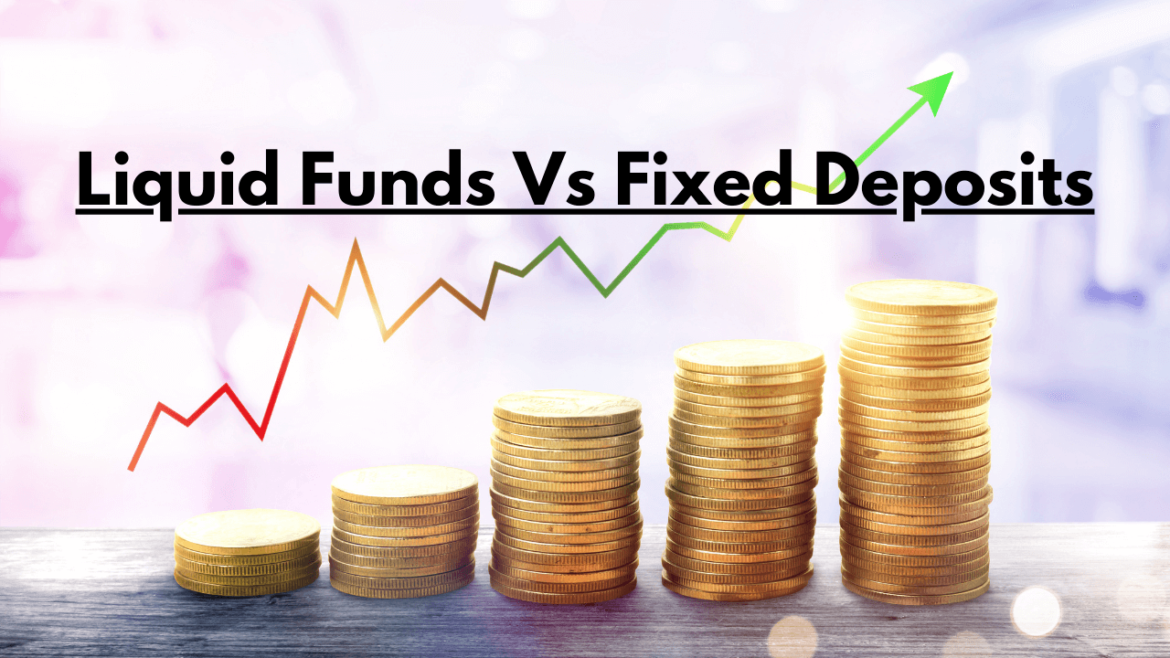

What are Liquid Funds?
A liquid fund is a type of mutual fund which invests primarily in money market instruments, like treasury bills, commercial papers, certificate of deposits, and term deposits. They allow investors to park their funds for a few days or months as they have maturities up to 91 days.

Liquid funds can be made liquid at any time and earn returns for the holding period. Because they earn a return from market instruments, liquid fund’s returns can rise or fall depending on the market rates. For very short debt, Market interest depends on the liquidity situation.
What are Fixed Deposits?
A fixed deposit (FD) is a financial instrument provided by banks, that provides investors with a higher rate of interest than a regular savings account, until the given maturity date. The defining criteria for a fixed deposit are that the money cannot be withdrawn from the FD, as compared to a recurring deposit or a demand deposit before maturity.

The level of liquidity is very low. To compensate for the low liquidity, FDs offer higher rates of interest than savings accounts. The longest permissible term for FDs is 10 years.
Comparison For Liquid Funds Vs Fixed Deposits
- Liquid funds are easily accessible as compared to bank FDs. Bank FDs would penalize you for pre-mature withdrawal.
- Liquid fund returns in the last three years have been quite impressive as compared to fixed deposits. But going forward market liquidity could decide rates.
- They do not have entry or exit loads.
- Lowest interest rate risks, as they invest in short-term fixed-income debt securities.
- Highest return compared to fixed deposits. It would range between 4% to 8% per annum.
- Liquid funds come with various plans like growth plan, dividend plans, daily dividend plans, weekly dividend plans, monthly dividend plans, etc
- Investors can invest in direct plans as they contain a low expense ratio and provide high returns.
Investors can choose good liquid mutual funds based on Crisil Rank, Value Research Star Rating, high Assets under Management (AUM), and past years performance.
Which One is Better?
| 1. Returns | Liquid funds invest in short-term securities and offer returns ranging between 5% to 8% per annum. On the other hand, bank fixed deposits offer 5% to 6.5% returns per annum, depending on the tenure. Lower the tenure, interest rates are lower. Liquid funds score higher compared to fixed deposits, for a short-term period of less than 1 year. If you invest for more than 6 months, the returns would be almost the same. |
| 2. Tax treatment | If you sell a liquid mutual fund before 3 years, any returns need to be added to your income and you need to pay income tax based on your tax bracket. Hence, no change in tax treatment of liquid growth plans vs fixed deposits for short term. |
| 3. Redemption | If you sell your liquid funds, you will receive the funds in your bank account on the same day or the next day, in the morning depending upon the time of redemption. On the other hand, fixed deposits closure can be done immediately. Most of the banks credit the funds immediately within the same day or the same hour. |
| 4.Interest Rate Risk | Since liquid funds invest in short-term securities, RBI rates have an impact on such securities. On the other hand, bank fixed deposits also have an impact on interest rate risks. Most of the time, both go hand in hand, sometimes, banks do not charge any interest rates due to minor RBI rate changes. |
Related article :- Postal Recurring Deposits Vs. Mutual Fund SIPs
Conclusion
If you want to park your money for a short term of 1 to 6 months, liquid funds would be the best bet for you. Consider the above factors before investing in such funds.
Related Posts
Stay up-to-date with the latest information.


